Science is a collective human adventure: interview with Pierre Léna Understand article
French astrophysicist Pierre Léna talks to Marlene Rau about science education as a symphony, the importance of curiosity, and his commitment to spreading inquiry-based science teaching in Europe and beyond.
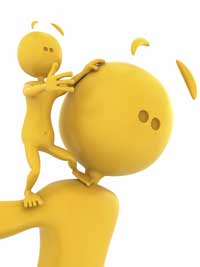
standing on the shoulders
of giants (…)”
Image courtesy of
pagadesign / iStockphoto
As a co-founder of La main à la pâte, you are a good example of how an individual can bring about major changes – in this case introducing inquiry-based science teaching to primary schools. What would you tell people who don’t believe in their power to change things?
I don’t place too much importance on the role of exceptional individuals. I often quote the French 12th-century theologian Bernard de Chartres, who said: “We are like dwarves standing on the shoulders of giants, and so able to see more and see farther than the ancients.” We are part of a long progression.
It’s exactly the same for La main à la pâte. When John Amos Comenius [1592–1670] invented nursery school in the 17th century, it was a revolutionary idea that children had the ability to reason: they were essentially considered to be little animals. After him, people like Maria Montessori [1870–1952] in Italy and Célestin Freinet [1896–1966] in France continued to develop the idea that children are not empty bottles to be filled with knowledge, but extremely lively organisms just waiting for a chance to develop.
When Georges Charpak [winner of the 1992 Nobel Prize in Physics] initiated La main à la pâte, he was drawing on a similar idea by another Nobel Prize winner, Leon Lederman, who had created a science education centre in a poor area of Chicago to train teachers and introduce inquiry-based science education into local schools. We are not individuals in a vacuum, we are just on the shoulders of predecessors, as they themselves were. It’s a long chain.
Do you think that France has a special history of fostering science education?
Well, certainly Europe has a special history. France has played an important role in the history of science and education, as have Italy, Germany, Denmark and others. This is why at La main à la pâte, one of the very first books we published was called L’Europe des Découvertes [The Europe of Discoveries; Jasmin, 2004], in which we collected – from different European countries – discoveries such as that of the hot-air balloon, simple enough for children to understand. Primary-school teachers can use this collection to give children the feeling that science is a collective human adventure, that the children belong to Europe, and that – like musicians in an orchestra – each country has played a different instrument. So I don’t think France has a unique or exceptional role, but we have certain talents.
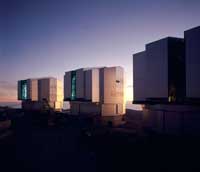
of the Very Large Telescope
Image courtesy of ESO
During my career, I have contributed to the construction of a European community in astronomy, and we have built this fantastic telescope in Chile: the Very Large Telescope [see Pierce-Price, 2006]. We would never have done it without the money from the different countries, but the money was not sufficient – it also needed the diversity of talents from every country. I think it’s important to convey the idea that science is a human and collective adventure, not a lonely and national activity.
And it’s not just about facts, either. Say you teach interference in a physics class, using the Young experiment: you take a piece of cardboard and a needle, make two holes in the cardboard, shine a laser onto it and you see the fringes – good. Many teachers won’t even do that; they will just draw the fringes and write the formula on the board – terrible.
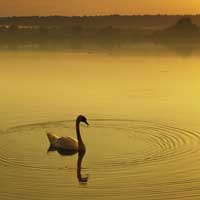
/ iStockphoto
But what if you tell the pupils that, at the age of 20, Thomas Young saw two swans swimming on a pond at a Cambridge college, making waves – and saw that these waves were interfering? And that this observation contributed to Young’s idea? If you give this background to the formula on the board, it changes the students’ experience completely. Science is a process of thinking, which is triggered by admiration, emotion, surprise – and we want to convey all those things to children. We must not extinguish them.
It can be difficult to change a firmly established idea of how science should be taught, though, can’t it?
Yes. That’s true, and it has not been easy to introduce inquiry-based science teaching in the classroom. However we have one good ally in this battle – the child. Many teachers change their minds when they see a colleague teaching a science lesson like this. Because what do they see? They see children who don’t want to have a break and play football – they want to continue the lesson, because it’s interesting. They see children for whom school is taught in their second language, or who never express themselves in the classroom, or with poor grades, low self-confidence or learning difficulties – they see these children changing their attitude. The children turn into good speakers, willing to explain to others, gradually improving. It is a little miracle. I have seen it happening so often that I can’t believe it’s a coincidence. Often teachers say: “Teaching inquiry-based learning is difficult, but it’s wonderful when I see the result, so maybe it’s worth trying.”
Inquiry-based learning can be a way to develop children’s curiosity, but is the importance of curiosity unique to science teaching? Basically, you need curiosity to gain any kind of knowledge.
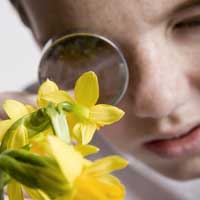
iStockphoto
It’s true that you need curiosity for any kind of knowledge acquisition, but science is something special, and this is why scientists are special people in a sense. Scientists ask “why?” a lot, but you can also ask “Why does this person love me?” or “Why does this man dislike me?” Questioning is universal; you can question absolutely anything. But what makes science special is how we go about finding the answer to “why?”: the scientific method.
Children and adults often have very different approaches to asking questions, don’t they?
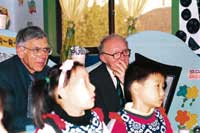
visiting the international
French school in Beijing,
China
Image courtesy of La main
à la pâte
Yes, and that is what sometimes destabilises the teacher because children go to the heart of the question: “Why does an atom have a mass? What is mass?” The teachers are sometimes completely baffled. They reply: “You have to wait until you grow up”, or “Oh, I don’t know, I never understood this myself” – which is honest, but not very satisfactory. Or, worst of all: “You shouldn’t ask this kind of question”. One should take the children’s questions seriously though, and that’s why so many teachers are afraid of teaching inquiry-based science lessons. Once you open Pandora’s Box….
The reactions from teachers in primary and middle school [for pupils aged 12 to 15] are different, though. In primary schools in France, we have teachers who usually have little science background, so they are worried about teaching the subject in the first place. In middle school, however, science teachers have four or five years of university training in physics or biology, so they are well prepared. Now we’re introducing inquiry-based science teaching in French middle schools, and some teachers tell us: “You are getting us into trouble because children might ask all kinds of questions to which we don’t know the answers. So we’ll do inquiry-based science teaching in a special way: we’ll guide them to the right answer. Of course we’ll have many questions coming from the class, but we’ll keep only those that will lead us exactly where we want to go.”
It is difficult to accept a new attitude that might destabilise your authority. Children can ask many questions, and in the inquiry process they make hypotheses. Some hypotheses are very interesting, but can be destabilising for the teacher.
Most teachers, especially in primary school, are very aware of their responsibility to educate children, helping them to grow as people – which is magnificent, of course. But they don’t see that science can help them in this task: building on children’s curiosity to engage them with the world around them. And that is something that – as part of the La main à la pâte project – we are able to help with (see box).
One last question: do you have a dream?
Yes, but my dream is not only for Europe: we are wealthy in Europe, but I have visited schools in Africa and in Latin America and seen the poverty. There are more than a hundred million children today who never go to school, and there are African schools with 120 children in one class. This is a very big problem. So if we succeed in building this European community of science education, we really have to share it with those countries; we have to help them, and also learn from them. The situation is bad, and climate change and overpopulation will make it worse. In a globalised world, we cannot just care for our own children. So my dream is that we build something for Europe, but that we then share it. It’s not simple, but we can do it.
Take Abdus Salam: he was a physicist from Pakistan who won the 1979 Nobel Prize in Physics. His dream was to foster research in developing countries. He convinced UNESCO, the Italian government, scientists and Nobel Prize winners to build a centre in Trieste, Italy, in 1964: the International Centre for Theoretical Physicsw2. It was to be a place to train scientists from developing countries to a high international standard. The role this centre has played in changing research in those countries is incredible; it’s a simple idea and a remarkable model.
La main à la pâte ideas have been extended to the Pollen project, in which 12 ‘seed cities’ throughout Europe encouraged inquiry-based science learning in primary schools (Lellouch & Jasmin, 2009). With the follow-up Fibonacci project, started in 2010, the model will be extended to even more countries, involving not only primary but also secondary schools, and not only science but also mathematics (see Léna, 2009). I think we should convince the European Commission that we should also run a similar, dual project with, say, 12 cities in Europe and 12 small towns in Africa. I know it’s possible, because La main à la pâte is working with a school in Cameroon – and science education has blossomed there. Nobody would have thought it possible, but we coached the teachers there, and it worked. Don’t forget – we’re dwarves standing on the shoulders of giants.
Pierre Léna
Pierre Léna, born in 1937 in Paris, France, is an astrophysicist who most notably contributed to the development of infrared astronomy, to the conception of ESO’s Very Large Telescopew1 in Chile, and to novel methods of astronomical imaging at high resolution.
Pierre Léna is very involved in reforming school science education, especially through the La main à la pâte initiative to introduce inquiry-based science learning into primary schools, which he launched in 1996 together with fellow physicists and members of the French Academy of Sciences, Yves Quéré and Georges Charpak (Lellouch & Jasmin, 2009). From 1991 to 1997, Pierre Léna was president of the French national institute of education research. He often visits schools and tests ways to teach science to children. In November 2009, for instance, he visited the international French school in Beijing, China.
Inquiry-based science education
Interpretations of ‘inquiry-based science education’ vary, and its applications differ depending on the age of the students. The basic idea is that instead of a teacher presenting concepts, their logical implications and examples of applications, children are involved to make their own observations and experiments and are guided by the teacher in developing their own knowledge. Children are encouraged to be curious and to tackle problems by observing and experimenting, and by reflecting and thinking critically about the meaning of the evidence they have gathered.
This works very well in primary school, by taking advantage of children’s natural curiosity at this age. Inquiry-based science education also encourages children to develop complementary skills including working in groups, written and verbal expression, and solving open-ended problems.
Coaching teachers in La main à la pâte
As part of the La main à la pâte projectw3, between 1500 and 2000 science or engineering students in France volunteer to help teachers use an inquiry-based approach in the classroom. For at least seven consecutive weeks, they spend half a day per week at a primary school, helping the teacher prepare the lessons – finding materials, preparing handouts, and setting up the experiments, as well as helping with the scientific concepts and knowledge. The teacher remains in charge of the lesson, and the student supports both the teacher and the children throughout the inquiry process. Once the lesson is over, the student and teacher analyse it together. For more information, see Lellouch & Jasmin (2009).
References
- Jasmin D (2004) L’Europe des Découvertes. Paris, France: Le Pommier. ISBN: 9782746501683
- Lellouch S, Jasmin D (2009) Catch them young: university meets primary school. Science in School 11: 44-51. www.scienceinschool.org/2009/issue11/pollen
- Léna P (2009) Europe rethinks education. Science 326: 501. doi: 10.1126/science.1175130
- Pierce-Price D (2006) Running one of the world’s largest telescopes. Science in School 1: 56-60. www.scienceinschool.org/2006/issue1/telescope
Web References
- w1 – ESO, the European Southern Observatory, is the foremost intergovernmental astronomy organisation in Europe and the world’s most productive astronomical observatory. ESO’s Very Large Telescope is the world’s most advanced visible-light astronomical observatory, located high in the Chilean mountains. To learn more about ESO, see: www.eso.org
- As a member of EIROforum, ESO is one of the partners that fund and publish Science in School. For more information about EIROforum, see: www.eiroforum.org
- w2 – To learn more about the Abdus Salam International Centre for Theoretical Physics, visit: www.ictp.trieste.it
- w3 – La main à la pâte, the French programme for inquiry-based science education, is coordinated by the French Academy of Sciences (Académie des sciences) with the support of the national institute of education research (Institut National de Recherche Pédagogique, INRP) and the École normale supérieure (Paris), in partnership with the ministry of education. For more information (in French) about La main à la pâte, see: www.lamap.fr
- For more information about the French Academy of Sciences, visit: www.academie-sciences.fr
- To learn more about the French national institute of education research, see: www.inrp.fr
- For more information about the École normale supérieure (Paris), see: www.ens.fr
Resources
- Instructions for repeating Young’s light interference experiment are available here: http://cavendishscience.org/phys/tyoung/tyoung.htm
Institutions
Review
All science teachers must have noticed the way their students change during their time at school. They generally start out excited, questioning and enthusiastic, and yet within the short space of a few years many come to find science irrelevant, dull and difficult.
Ideally, the children’s enthusiasm and curiosity would be encouraged at school, in a ‘proper’ laboratory environment with specialist teachers who are able and willing to guide their students’ learning and inquiry. However, this is seldom the case – either in primary schools or in secondary schools. Primary-school teachers often lack the detailed subject knowledge and confidence to guide student inquiry. Appreciate the teacher’s dilemma – struggling with their pupils’ ‘what, where, why’ questions, having to admit that they do not know, and not knowing if it is a shortcoming on their part or if the pupil has touched on an area where even career scientists tread very carefully!
At secondary school, the teachers have the specialist scientific knowledge, but the heavily content-drive curriculum means they often lack the time for student-centred inquiry. Thus, when children are young, teachers struggle to guide them in finding the answers they seek; when they are older, students are told that there simply isn’t the time for these educational asides.
Pierre Léna encourages a loosening of the authoritarian reins and stepping away from the carefully orchestrated (and yet tedious) enquiries into the resistance of wires or the activity of enzyme solutions. Carefully managed, it could be liberating for teachers and students alike.
Ian Francis, UK





